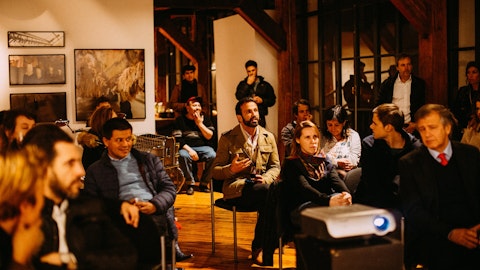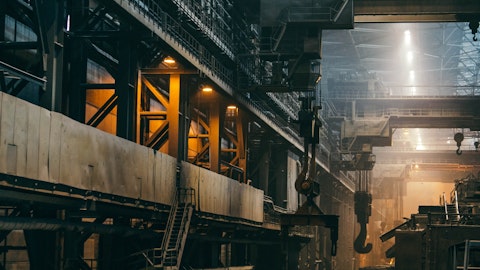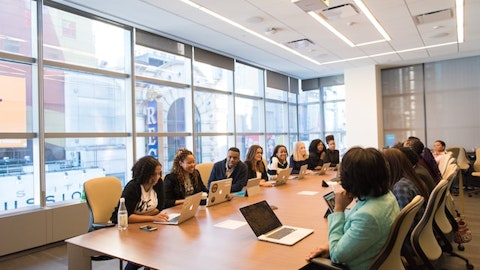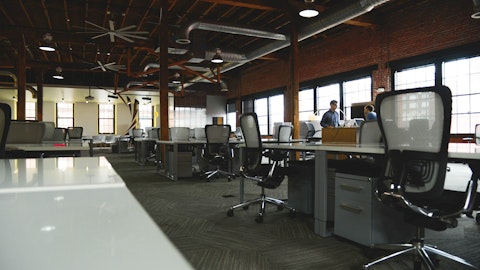Dave Sylvester: Well, I think all three. They remain part of our capital allocation. We first obviously look to reinvest in the business. And acquisitions have been a part of our allocation and ideally will be part of our allocation go forward. We think of us again as more bolt-on — targeting bolt-ons that will help accelerate one of our existing strategies. And we are, I would say, periodically, if almost not continuously, talking to different companies. We just haven’t found the right fit at the right price yet. So hopefully, something will materialize in the coming quarters on that front. Now, we do have higher capital expenditures in front of us over the next couple of years as we finish our ERP system. That’s not going to chew up a tremendous amount of liquidity, but it’s certainly more than usual than our usual rate of CapEx. The dividend is an important part of how we return value to shareholders, always has been.
We are trying to keep it in line with earnings. So, I don’t — it’s a Board decision, and they evaluate it every quarter. So, as our earnings grow, it’s certainly possible, imaginable that we might increase our quarterly dividend. And yeah, we have taken note of repurchase opportunities. We had a 10b-5 program in place the last six months. Unfortunately or fortunately, we did not buy any shares. The stock price just didn’t go down to levels that we were targeting. So, I guess that’s good news, bad news from a repurchase standpoint. But we have had a couple of million shares of dilution over the last two years from equity awards related to executive and director compensation. So, we’re always looking to minimally offset that.
Operator: Your next question is from the line of Budd Bugatch with Water Tower Research. Please go ahead.
Budd Bugatch: Congratulations on your progress, and certainly the quarter and the balance sheet for sure. Sara, I’d love to get your view on — and in your new presentation, you talk about several years of disruption, which is certainly, I guess, an understatement. What does demand growth look like? You’ve changed a little bit of the target, David, as you noted, I think, from 5% to 7% to 4% to 6% for the next three to four years in terms of percentage — annual percentage of growth. But business is being done a little differently now. And just how do you see that? And what can we take away from that?
Sara Armbruster: I guess, Budd, I would say that I don’t know that I see business being done dramatically differently. I do think that the customers that we serve, who are looking to update and modernize their spaces and make their spaces work harder, are thinking differently about what those spaces look like, and they’re thinking perhaps differently about what kinds of solutions and amenities they need to provide in their spaces to attract and retain talent and to drive their business initiatives and business outcomes. So, I think those things are certainly different in some respects than they were prior to the pandemic. In terms of how business gets done, in terms of how customers are behaving, in terms of how they think about timelines of projects and decision-making and how they interact with us from a kind of putting in the order and us serving them, I don’t think that that’s dramatically different than before the pandemic.
It’s really more about the kinds of solutions they’re trying to implement to support their businesses and their employees as they look forward.
Budd Bugatch: But haven’t you changed a little bit of that technique? I mean, you folded down the Steelcase Aviation, so you have now, I think, more reliance on your local showrooms. And does that change the cycle of the way it works?
Sara Armbruster: I would say that we had seen, for several years, going back to well before the pandemic, gradual shifts in how customers wanted to engage. I think we saw certainly lots of interest still in visiting us in Grand Rapids and experiencing what we have to offer here in this sort of flagship location. But we also saw many customers increasingly looking to have more local market experiences closer to home, and in some cases, maybe more specialized experiences. So, clients, for example, from higher education, looking to really immerse deeply in learning solutions, or healthcare customers looking to immerse more deeply in healthcare-targeted solutions, those kinds of things. So, I think that our shift to local market experiences, our investments in pop-up studios, our investments in significant renovations of many of our major locations, those kinds of choices were really a reflection of us wanting to be able to meet customers where they’re at and really provide a diverse set of experiences and offerings to help them on their journey as they look at solutions and they contemplate ideas and they make decisions.
Budd Bugatch: Does that stretch corporate selling resources a bit more than usual? If people were coming to Grand Rapids, it helps to concentrate the selling effort. If it’s a lot more local, there’s corporate — how does corporate support that? And does it take more resources?
Sara Armbruster: No, I wouldn’t say it takes more resources. I think we’re just using the resources we have differently because remember, in all the local markets where we’re creating these experiences, we have local sales teams. We have terrific people all over the country and all over the world who are ready to engage and host and help curate those experiences for clients. And I think we’re fortunate to have experts, researchers, people with insights that are available and accessible in lots of different locations. And we’ve just, I think, been, frankly, smarter and more efficient in terms of how we leverage those kinds of people and talent and resources to create the most meaningful kinds of experiences for customers in a way that’s very bespoke and tailored to what that particular customer is looking for.





